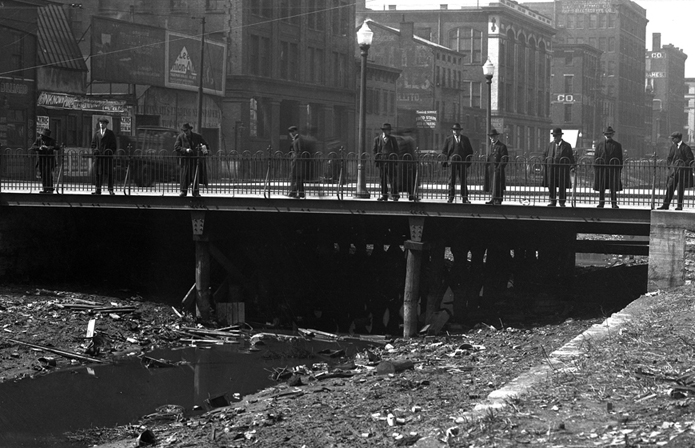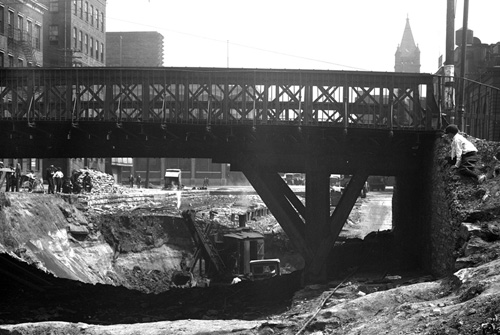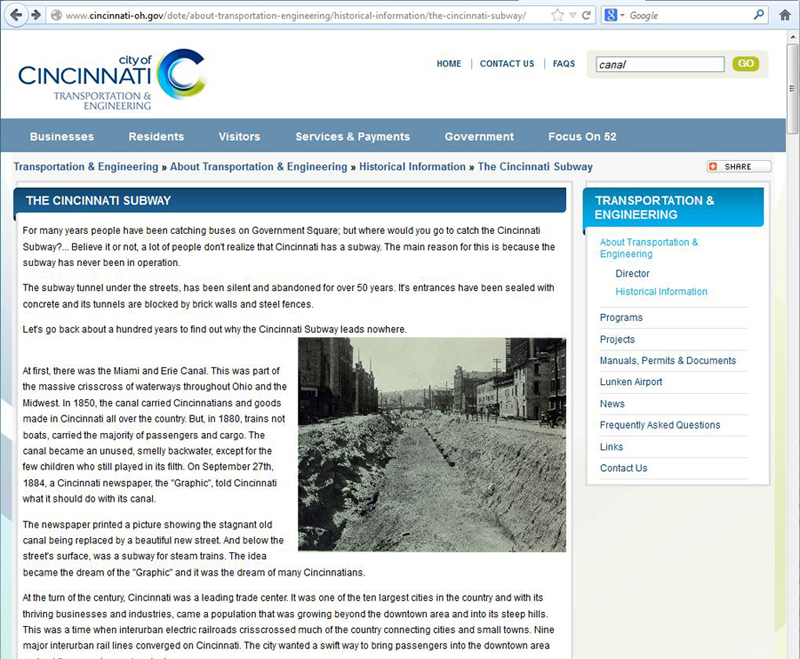By: Angela Vanderbilt
The fascination and level of interest in Cincinnati’s attempt to build a subway is as alive today as it was when the first shovel-full of dirt was lifted from the canal bed in January, 1920. For some, it is a fascination with Cincinnati’s history, a desire to learn more about how their city has developed. For others, it is a fascination with what lies beneath Central Parkway, the desire to walk the tunnels through which no subway train has ever run.
Last week, I experienced first-hand this ongoing fascination with the subway when I attended a program presented by the Cincinnati Museum Center at the

Flier advertising Cincinnati Museum Center lecture given on the subway at Cheviot Branch Library, March 7, 2013
Cheviot Branch of the Cincinnati Library. Museum Center docent David Savage presented the history of the 1920s rapid transit project to a crowd of over 25 attendees ranging in age from mid-20s to mid-70s. Audience members had varying levels of knowledge regarding the subway. The majority of the audience was already familiar with the story, while the remaining handful were learning of the ill-fated project for the first time. All were very interested in the information provided by Mr. Savage, including the original and altered routes of the subway, as well as numerous images showing early construction and current photos taken during museum-led tours.
The Museum Center provides scheduled lectures on the subway as part of their general programming, as well as an annual tour of the subway tunnels as part of their Cincinnati Heritage Programs Tours. The tour is limited to a single day in May per year. A massive water main now runs through the tunnels, and the city is required to shut this down during the tour. Space is limited, and the tour sells out quickly, a testament to the ongoing interest in what remains of the abandoned project.
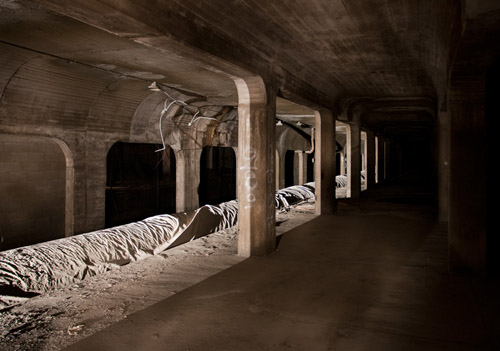
Water main running through subway tunnel at Liberty Street Station. Photo by Zack Fein, http://zfein.com/photography/subway/index.html
During those first months of construction back in 1920, Cincinnatians were awestruck with the whole process, from the draining of the canal to the equipment being used to excavate the site. Kids were especially curious, and could often be found down in the construction sites. Business men paused on the bridges over the dead old ditch to inspect progress (remember, voters approved the bond issue to fund the $6 million project) on a daily basis.
As I’ve researched the subway, whether to identify the location of an image or for information to include in blogs and the ARB’s online exhibit, I’ve come across numerous sources in both print and online formats about the city’s “white elephant”. Multiple books, have been written on the subway, including the Arcadia book “The Cincinnati Subway: History of Rapid Transit” by Allen J. Singer and “Cincinnati’s Incomplete Subway: The Complete History” by Jake Mecklenborg, along with news articles and magazine pieces.
Web sites and blog pages by have been created by organizations and private individuals providing then-and-now photographs, historical information, and ideas for future uses. Two blogs I’ve come across with fantastic recent photographs of the tunnels are ‘(Local) Architecture Cincinnati’, http://zfein.blogspot.com/2010/03/cincinnati-subway.html and ‘Queen City Discovery’, http://queencitydiscovery.blogspot.com/2009/03/cincinnati-subway.html. Below are images from each:
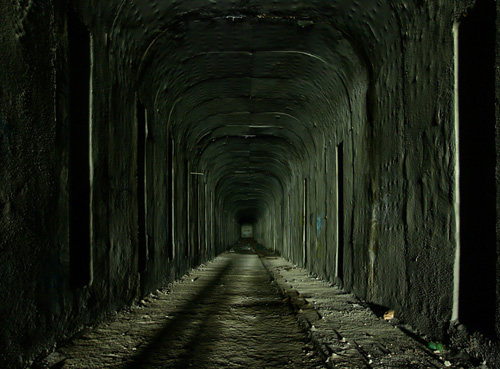
Section of tunnel, unknown location. Photo by Zack Fein, http://zfein.com/photography/subway/index.html
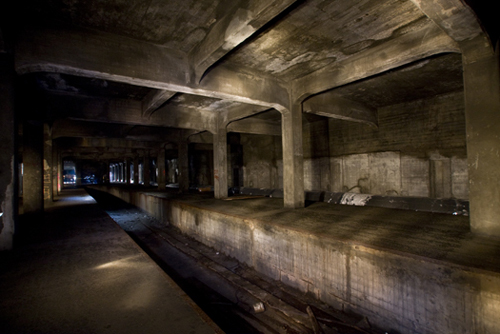
Race Street Station. Photo by Queen City Discovery, http://queencitydiscovery.blogspot.com/2009/03/cincinnati-subway.html
The subway even has its own Wikipedia page, http://en.wikipedia.org/wiki/Cincinnati_Subway, and two Facebook pages, one of which (Cincinnati Subway) is an “Interest” page and appears to be just an extension of the Wikipedia page. Ah, the social media world we live in! The second Facebook page, Cincinnati’s Abandoned Subway, is part of the PBS documentary that was filmed in 2010, http://www.thecincinnatisubway.com/. This site appears to be following the latest developments of the Cincinnati Streetcar Project with regular postings.
The City of Cincinnati Transportation & Engineering Department, who maintains the subway tunnels and stations, provides historical information about the subway project on their web site, http://www.cincinnati-oh.gov/dote/about-transportation-engineering/historical-information/the-cincinnati-subway/. This site also provides access to feasibility studies – Requests for Qualifications (RFQ) – made over the years by the Transportation & Engineering Dept. for alternative uses for the subway tunnels, as well as other documentation regarding the current use of the tunnels.
All sources provide historical background about the subway project’s plans, budget and original route, the success, the delays and construction issues that were encountered, and ultimately, the failure of the project overall. The amount interest and the types of resources that offer information about the subway today are every bit as fascinating as the subway itself!
 This project is funded by a grant for $60,669 through the Library Services and Technology Act, administered by the State Library of Ohio.
This project is funded by a grant for $60,669 through the Library Services and Technology Act, administered by the State Library of Ohio.

